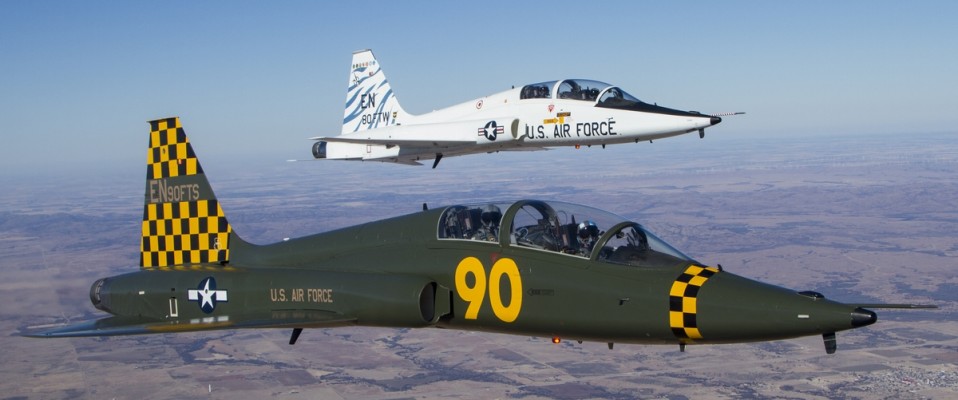ENJJPT: 40 Years of Training NATO’s Future Military Pilots
Report and photos by George Karavantos
May 5, 2022
For 40 years now, ENJJPT has taken over the training of all the NATO members for preparing their future pilots. Located in Texas, at the Sheppard AFB, the Euro-NATO Joint Jet Pilot Training (ENJJPT) is a multi-national flying training program chartered to produce combat pilots for both USAF and NATO.
THE BEGINNING:
In the early 70’s, the high cost of national fast jet training programs forced a number of NATO countries to examine other options for a joint solution. It was triggered not only by the ever-increasing resources needed to support such activities and the inability to justify purely local training, but also by a need to improve interoperability between NATO air forces.
Relatively restricted airspace and the unpredictable north European weather were other major driving factors. In 1974, Canada, Italy, Turkey, the UK and the US launched a plan to host a joint undergraduate pilot training program. A thorough review followed and led to Sheppard AFB in Texas, and its resident 80th Flying Training Wing, being judged to offer the best option.
This was mainly due to a combination of good flying weather, adequate training airspace, sufficient existing facilities and growth potential to accommodate proposed annual requirements. The selection of Sheppard and the 80th FTW came as an extension of existing undergraduate pilot courses there, which had already been established for the German and Dutch air forces.
The Euro-NATO Joint Jet Pilot Training program was duly launched in 1978. A planned 10-year agreement was seen as a short-term measure while studies regarding relocation to a European base continued. In June 1980, the then US Secretary of Defense, Harold Brown, announced that Sheppard had been formally selected for the ENJJPT. It officially opened on the 23th of October, 1981. Due to its success over the ensuing years, combined with a number of stalled attempts to bring more training to Europe, the initial 10-year hosting period at Sheppard has been extended multiple times. It is now extended through 2026, with no current plans of moving elsewhere. Since then, the program has pinned wings on over 8000 pilots and counting.
ENJJPT provides flight training to student pilots from nine NATO partners: Belgium, Canada, Denmark, Germany, Italy, Netherlands, Norway, Turkey and the United States. Greece and Spain for years were taking part into this training organization but they were only providing instructors. Spain started also to send its first students at the end of 2019 while United Kingdom resumed its contribution by resending instructors in July ’19 and students in August ’19. Romania is the new member who started to send its first students in May ’19. Right now Portugal is the only non-active signatory. The ENJJPT trains 50% of all USAF fighter pilots and is the sole source of fighter pilots for partner nations: Belgium, Denmark, Germany, Netherlands and Norway.
All of these countries know that none of them is going to fight wars in the future on their own. Coalition warfare is the future. The coalition against ISIL had 16 nations participating. There is no way that the US could have done that alone. Such an important part of that coalition -building is right here, right now – learning how to train, how to integrate, how to be interoperate in this training environment, before they ever go off to combat together. It’s such a critical part of coalition air power for the future. It just becomes seamless in combat.
TRAINING SYLLABUS
ENJJPT offers four distinct training programs. In addition to Undergraduate Pilot Training (UPT), it provides in-house instructor training (teaching pilots how to become instructors), Introduction to Fighter Fundamentals (IFF) and IFF upgrade instructor pilot training (a syllabus for upgrading instructor pilots to IFF instructors). About 200 student pilots earn their wings at ENJJPT annually. Around 80 new instructors are trained per annum, and up to 150 pilots’ transition through IFF each year.
EVERYDAY FLYING:
The host Wing of the ENJJPT, the 80th FTW, belongs to the US Air Force’s Air Education and Training Command (AETC). The Wing has 211 aircraft, (76 T-6 and 135 T-38), which are divided into five fight training squadrons (FTS).
Two of them fly the T-6A Texan II (89th FTS “Banshees” and 459th FTS “Twin Dragons”) and another three which operate the T-38C Talon (88th FTS
“Lucky Devils”, 90th FTS “Boxing Bears” and 469th FTS “Fighting Bulls”).
The Beechcraft T-6A Texan II, based on the Swiss Pilatus PC-9, is used for basic training for new students arriving at Sheppard. It was introduced into service with the USAF in 2001, replacing the Cessna T-37B ‘Tweet’. The advanced phase sees a step up to the popular, but aged T-38, which has been a USAF staple for almost 60 years. Today, as per regular USAF training units, ENJJPT trainees fly the upgraded T-38C. Both aircraft fly approximately 230 sorties per day. For the year 2021(since 1st October until 30th September) the T-6 logged 31.493 hours while the T-38 23.799 hours and in the IFF 7.589 flight hours.
THE TALON:
The T-38 Talon is the mainstay trainer of the USAF that first flew on the 10th of April 1959 and entered service in March 1961, almost 60 years ago! It was the world’s first supersonic trainer and is also the most produced one. When production ended in 1972, 1,187 T-38s had been built (plus the two N-156T prototypes).
This unique design was based on the 1954 Northrop’s N-156 light military jet concept, aiming for a small supersonic fighter jet capable of operating from the US Navy’s escort carriers. However when the Navy chose not to pursue equipping its fleets in that fashion, Northrop decided to continue the N-156 design using in-house funding. It presented two versions: a lightweight fighter (so called N-156F) and an advanced trainer (the N-156T).
In the mid-1950s the USAF issued a General Operating Requirement for a supersonic trainer, planning to retire its 1940s-era Lockheed T-33s. Northrop officials decided to adapt the N-156 to this competition. The only other candidate was the two-seat version of the North American F-100 Super Sabre. Although the F-100 was not considered the ideal candidate for a training aircraft (it was not capable of recovering from a spin), NAA was still considered the favorite in the competition due to that company’s favored-contractor status with the Air Force.
However, Northrop officials convincingly presented life-cycle cost comparisons which could not be ignored, and they were awarded the contract, receiving an order for three prototypes. The first (designated YT-38) flew on 10 April 1959. The type was quickly adopted and the first production examples were delivered in 1961, officially entering service on 17 March that year, complementing the T-37 primary jet trainer. Since its introduction, it is estimated that some 50,000 military pilots have trained on this aircraft. The USAF remains one of the few armed flying forces using dedicated supersonic trainers, as most, such as the US Navy, use high subsonic trainers.
In the late 1990s and due to the increased training needs for pilots of fourth generation fighters (F-16C, F-15C / E) the Air Education & Training Command sought a new upgrade of the T-38A fleet. The program was named Pacer Classic Program and concerned the upgrade of Talon electronics (AUP – Avionics Upgrade Program) and the modernization of its engines (PMP – Propulsion Modernization Program). From the beginning of 2001, the aircraft began to be equipped with a complete “glass cockpit” that included:
-Global Positioning System (GPS)
-Radio Altimeter (RA)
-Inertial Navigation System (INS)
-Traffic Collision Alert and Avoidance System (TCAS)
-No-Drop Bombing System (NDBS)
-Data Transfer System (DTS)
-Tactical Air Navigation (TACAN)
-Hands On Throttle And Stick (HOTAS)
-Head Up Display (HUD)
-Multi-Function Display (MFD)
-Electronic Engine Display (EED)
-Global Positioning System (GPS)
In the engine part, the PMP program included the replacement of some parts of the existing engine with new and more reliable parts, the conversion of the engine nozzles as well as the redesign of their air intakes.
NEW ERA:
Looking back 60 years ago to those early T-38A sorties with the 3510th Flying Training Wing at Randolph Air Force Base, Texas, it’s clear how dramatically-different the Talon was compared to the Lockheed T-33 it replaced. Elsewhere in the Air Force, the McDonnell F-101 Voodoo and North American F-100 Super Sabre were among the stalwarts of tactical airpower, the McDonnell F-4 Phantom II was ten months away from service entry, and Boeing’s B-47 Stratojet and B-52 Stratofortress were the ultimate expression of American bomber prowess. In this company, the T-38 was every bit the futuristic trainer.
But nowadays this trainer is really outdated and the fact that its aerodynamic characteristics were based to another era and philosophy, don’t help the new modern pilots at their entry into jet aircraft. The T-38 is still hard at work around the USAF, with 546 jets still actively employed.
The Air Force T-X (now T-7 Red Hawk) program will provide the USAF with a new fast jet trainer and associated synthetic system to replace the venerable T-38. The program is looking for a replacement more suited to getting pilots ready for the fifth generation fighters and beyond, but it’s a testament to these planes that they’re still being successfully employed in large numbers so many decades after they were designed and built.
The Air Force is obviously sending more and more students now to the F-35 and to the F-22, and as more and more partner nations out of the 14 have bought the F-35, ENJJPT has to make sure that it continues to provide the best training to get them to that platform. Right now, the T-38 syllabus is designed for the fourth-generation fighter, so it continuously keeps adapting until the T-7 arrives. From sensor management, air-to-air refueling, night vision goggles and all the things that the T-7 will bring in order to be able to better prepare the next pilots for their next-generation fighter.

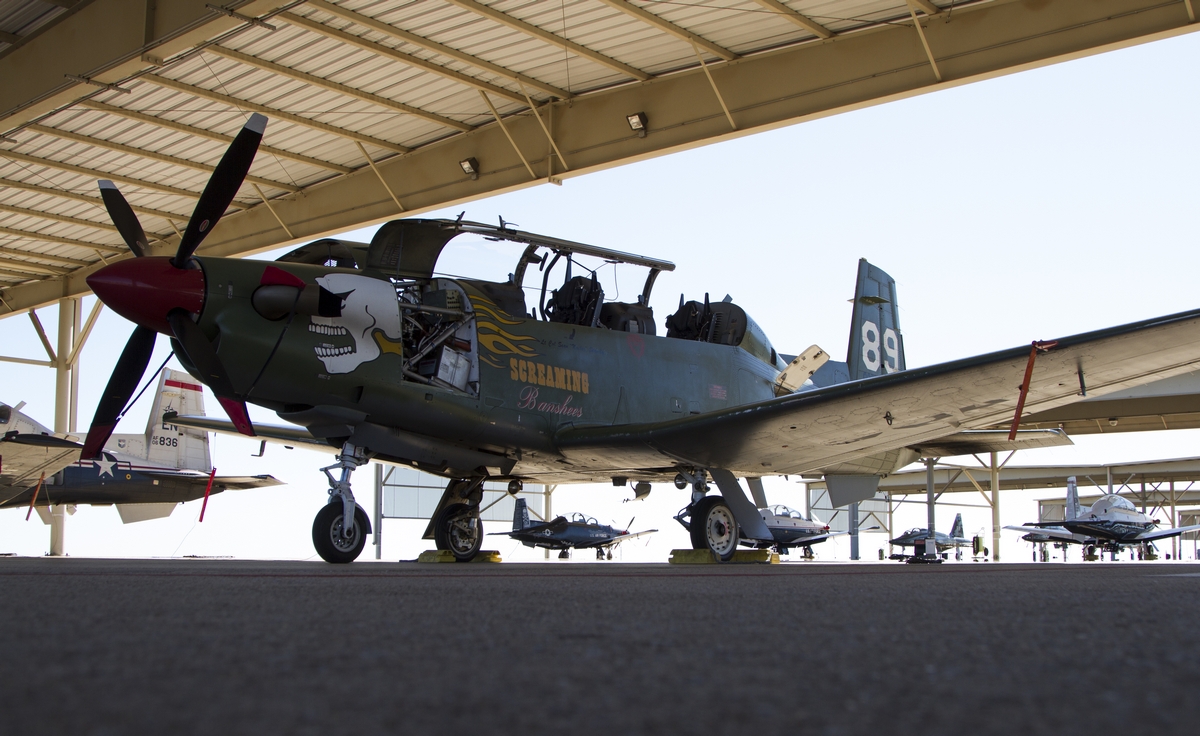
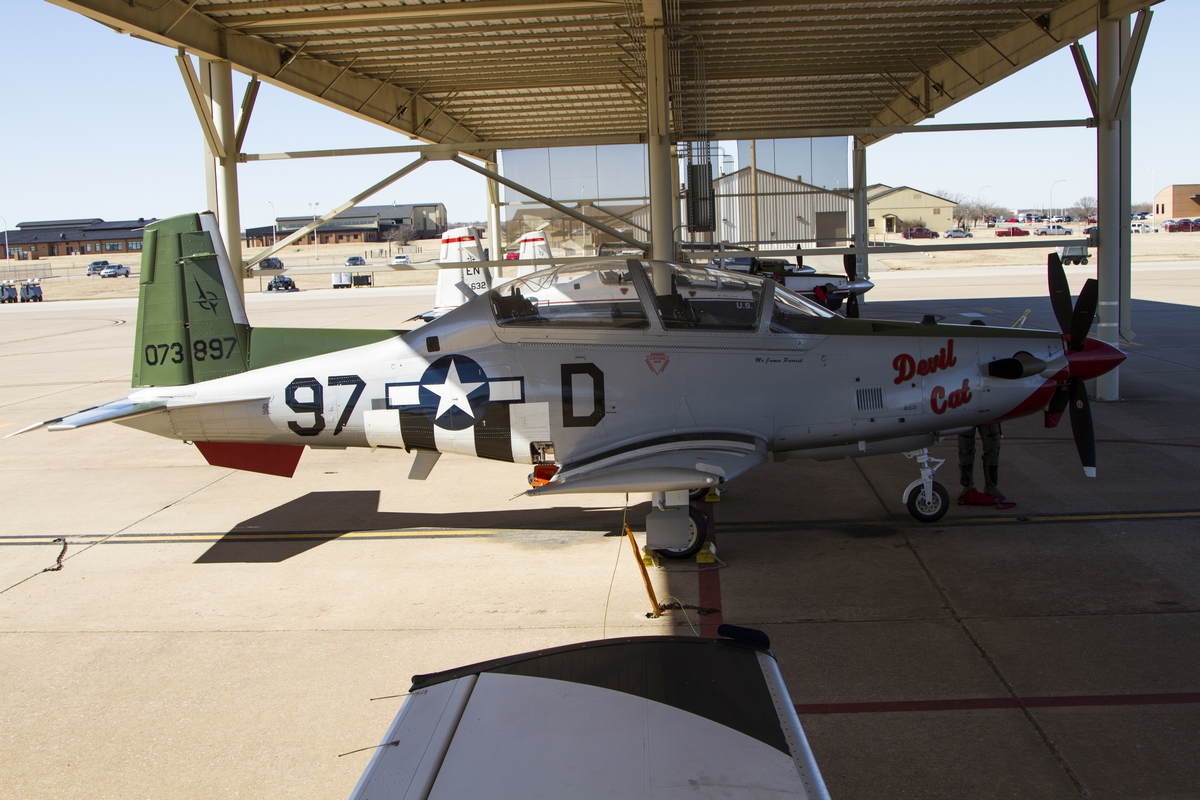
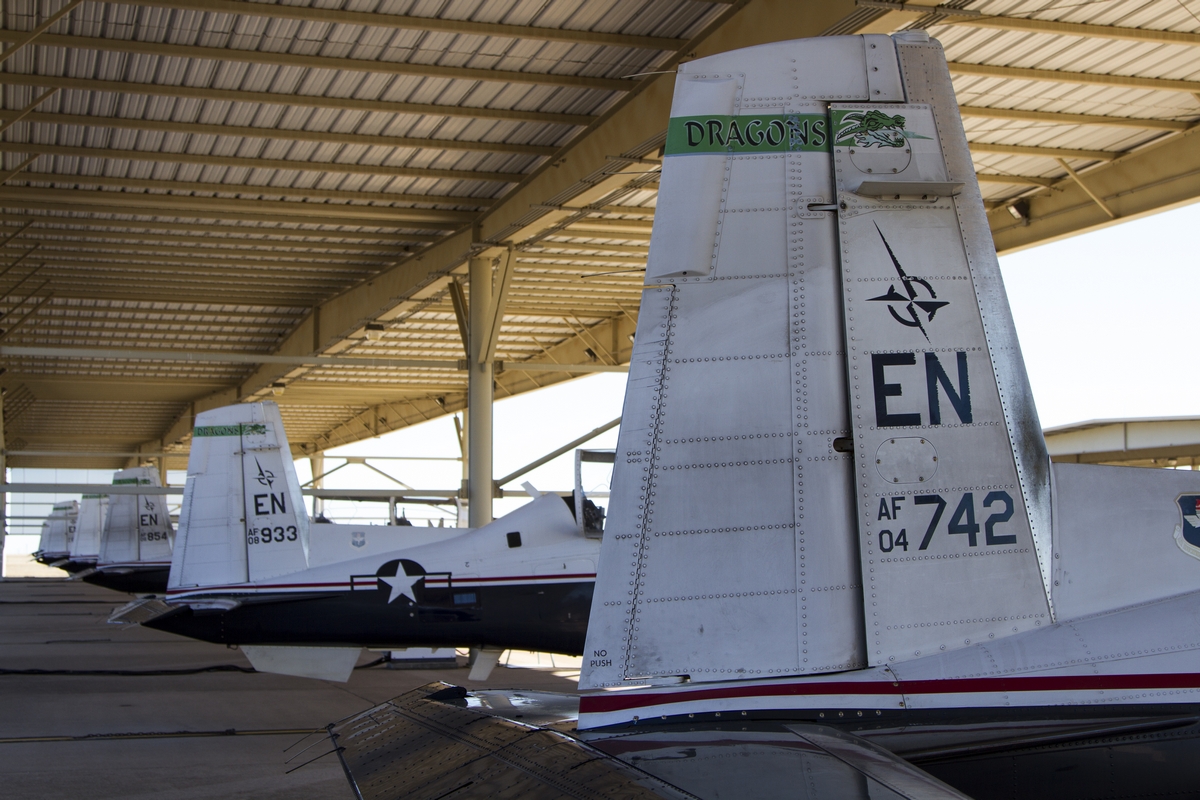
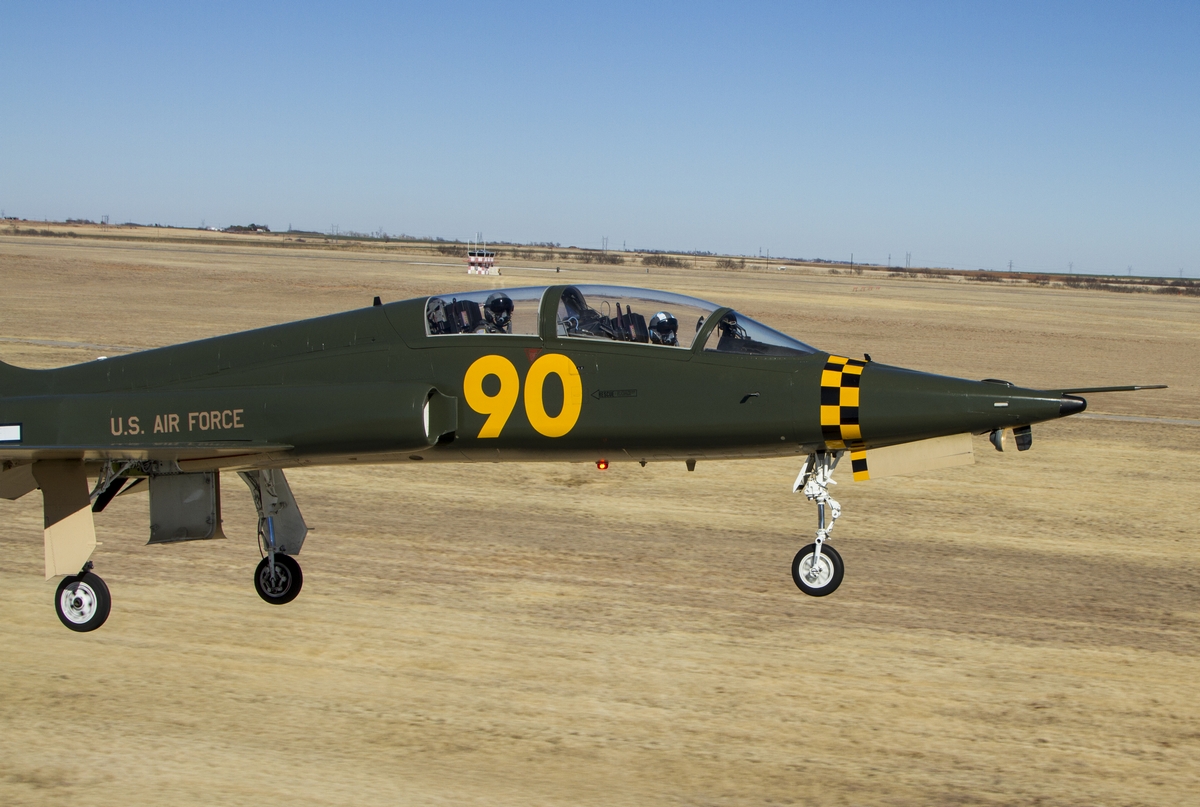
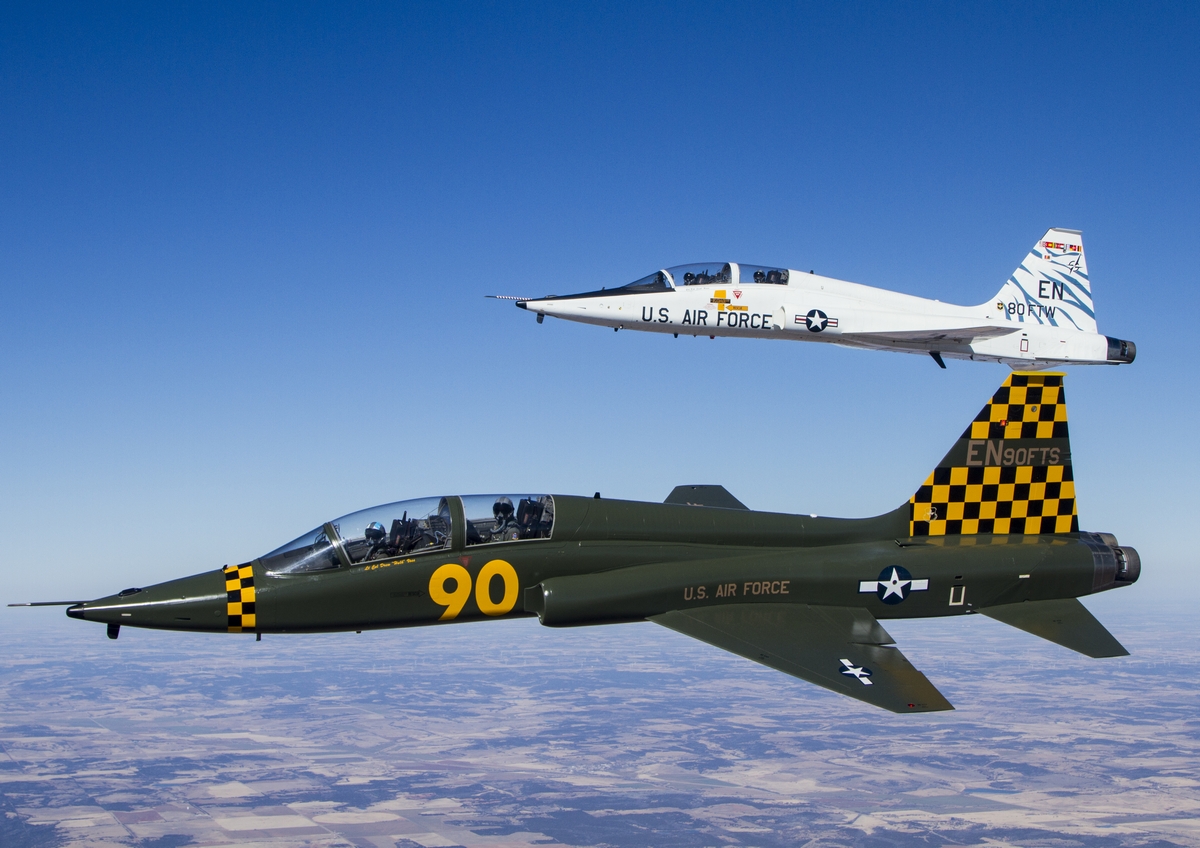
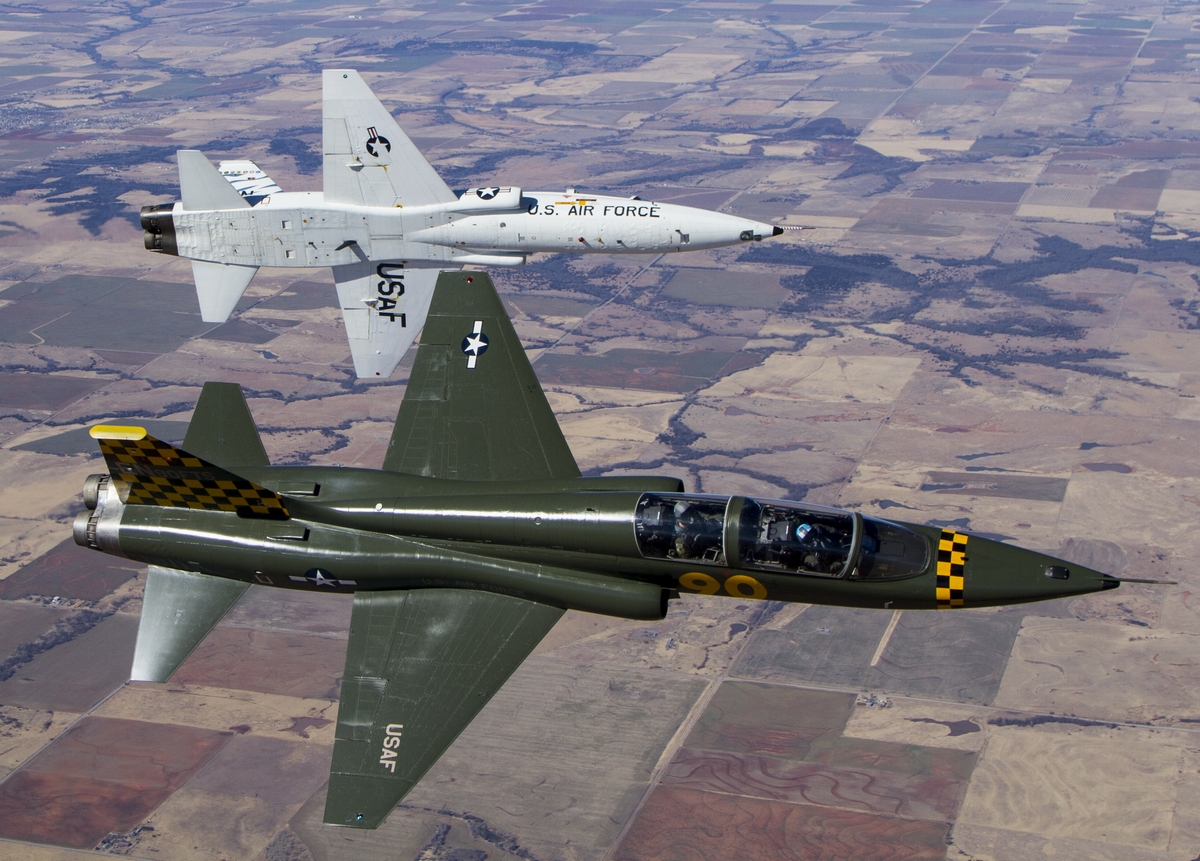
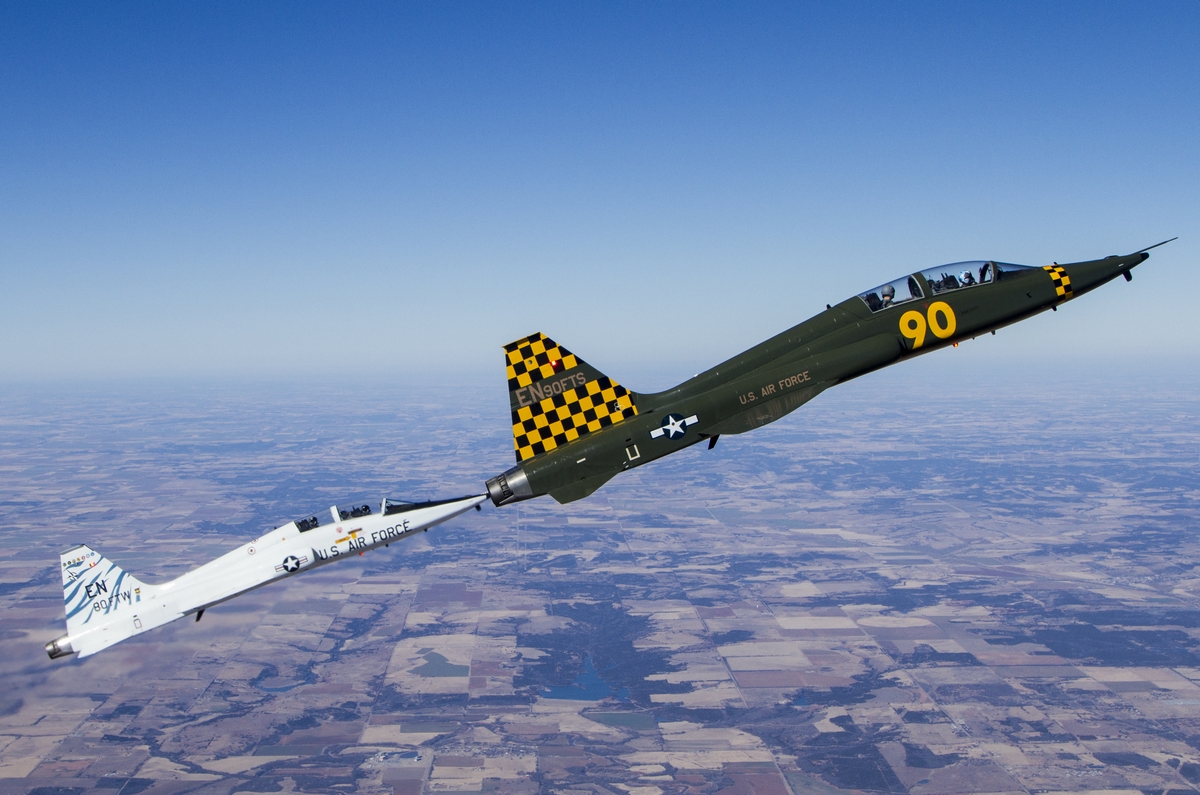

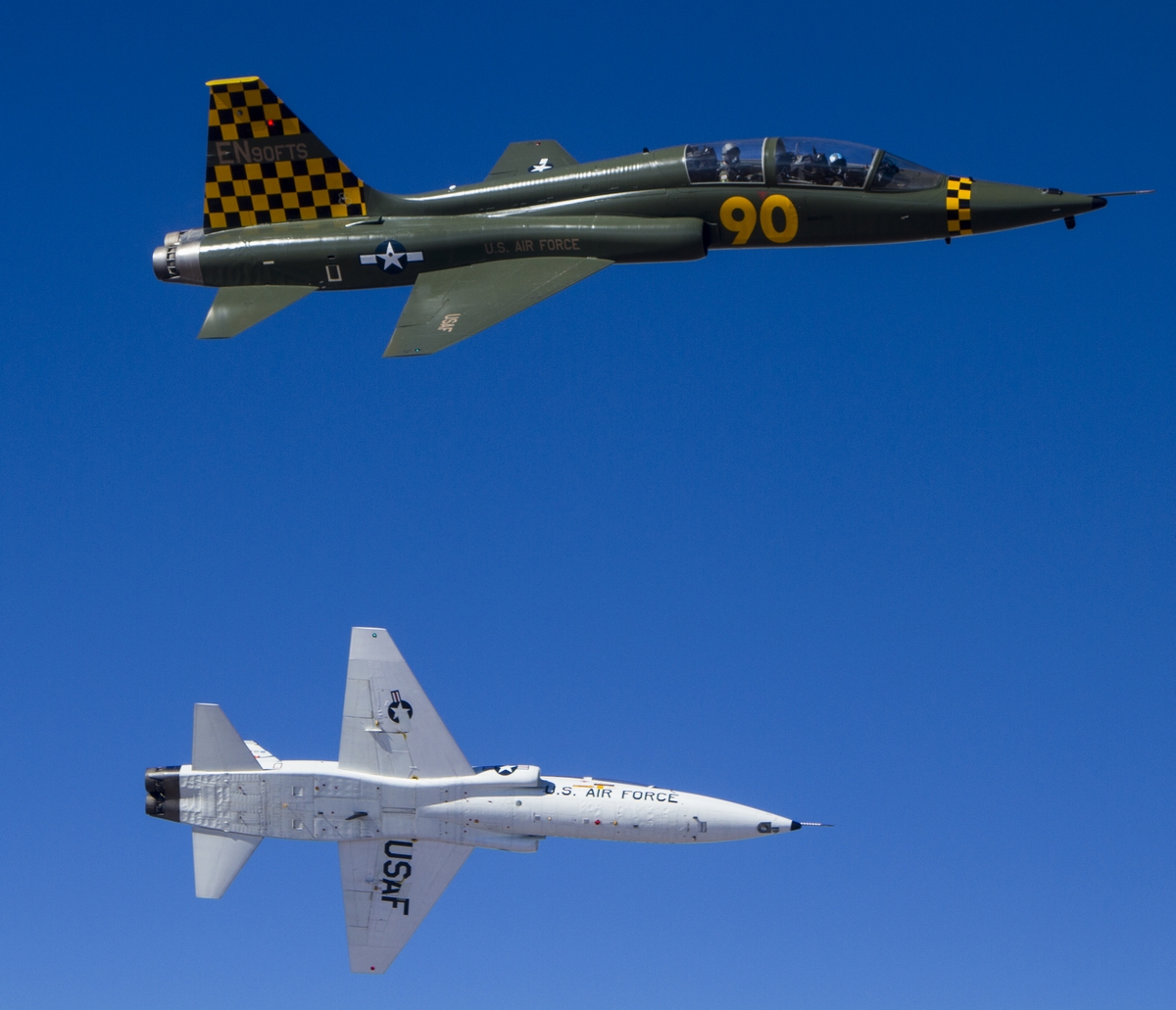


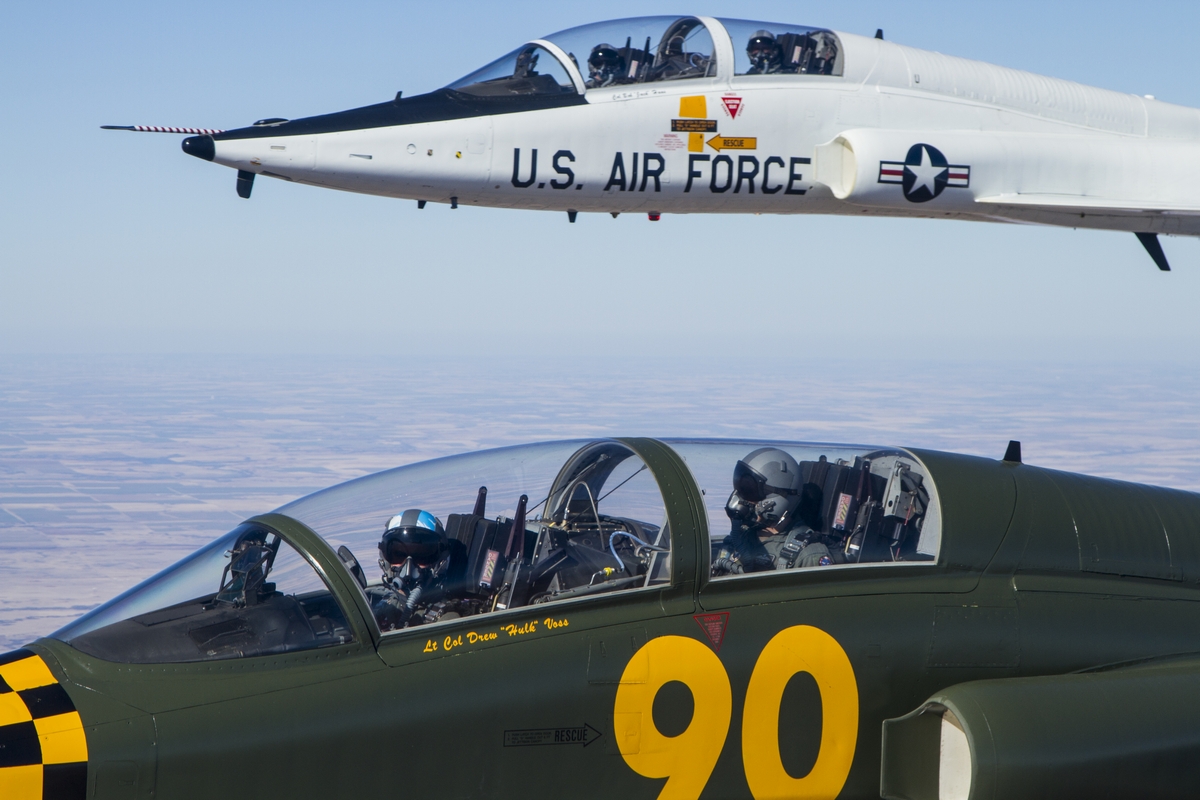

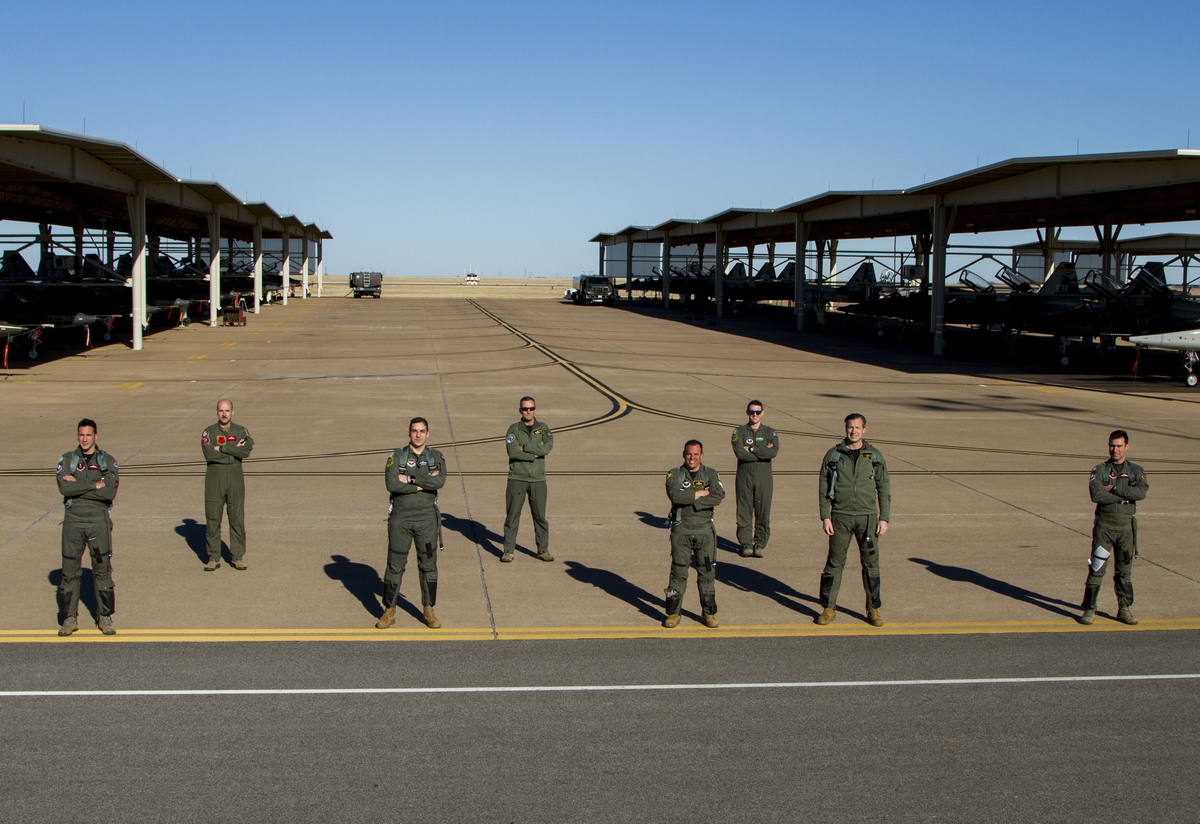

George Karavantos is from Athens, Greece. His love with military aviation started at the age of 10 when he accidentally read a Greek aviation magazine. Since then, he never stopped reading about fighter aircraft and taking photos of them. He was too tall to become a fighter pilot, so he became an airline pilot. Nowadays he is a Captain and a Flight Instructor on the A320 aircraft. Despite his profession, military aviation will always be his obsession.

